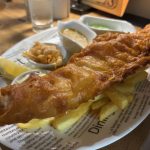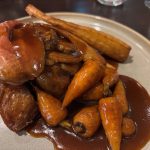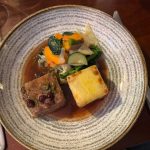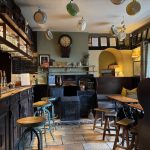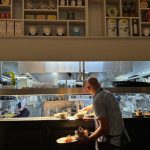
Xu bar
It’s interesting when the major critics disagree over a new restaurant. When they all agree a place is splendid, it’s safe to say that it’s probably splendid. When they all agree a place is dire, it’s probably better to dine elsewhere. But when a couple of them sing high praises and the others damn with faint praise, who do you trust? It’s easy to shrug this off as “just different tastes”, but I’m not so sure. My hunch is that the whole experience of the evening – even for a professional reviewer – is going to have a much bigger influence than their personal preference for sous vide over deep fried. Did they turn up with high expectations or none? Were they having a great day or was it a crappy one? Was the service effortless or were there irritations?
An interesting question (that I am too lazy to research): where the major critics disagree over a restaurant, is the eventual public consensus usually on the side of the ones who loved it or the ones who loathed it? Is there a pattern?

Dramatic cuttlefish toast
, a Taiwanese restaurant with evocative 1930’s post-colonial styling, seems to have divided opinions; it’s either a great and unique addition to the London dining scene, or a good idea not executed very well. Luckily I am here to split the difference!
The interior is great, full of atmosphere without straying into pastiche. There are nice touches like a dedicated tea bar downstairs to match the more obvious cocktail bar upstairs, and some mah-jong rooms hidden in the back for private dining. We had a mixture of service, some very friendly and helpful, others a little hesitant; perhaps just a reminder that Xu has only been open for a couple of months, and has a fairly complex menu. Anyway, it’s a million miles from the “what you want? Just tell me number” service you get at more basic Chinese places.
The menu also fits on one page. We kicked off with a mixture of starters. A neat bowl of diced smoked eel and fresh cherry tomato, dressed with a spicy oil and topped with crunchy dried daikon was very delicious, perhaps the best tomatoes I’ve enjoyed all summer. Dramatically black cuttlefish toast with smoked cod roe was a tasty riff on good ol’ prawn toast. My favourite starter was a dish of fried sweetbread with pickled greens in a curried gravy; I didn’t manage to pick out the individual spices, it was simply an excellent sauce to bring together and balance the soft pieces of sweetbread and the slightly mustard-y pickles. Chilled slices of beef tendon terrine was probably my second-favourite, very delicate and very savoury.

Tomato and eel
There were some spiffy main courses to follow. My seabass lurked under a daunting looking relish of bright red and bright green chillies, but although packing some heat it wasn’t as eye-watering as it appeared. The fish beneath was neatly cooked, the fish bone sauce giving the whole dish some depth of flavour. Another main of beef slices in black pepper sauce with a fried egg was most epic for the stunning heart-warming splendour of the honey black pepper sauce, though the thin slices of rare beef couldn’t be faulted. And a fried egg. Those Taiwanese, eh! Vanessa’s piece of Char Sui Iberico Pork was a good piece of barbecued meat, but being described as “in char sui” it was a bit disappointing to find it dry. Loved the sturdy sticks of black barbecued cucumber scattered with sesame seed that it was served on. We tried two or three different rices to accompany, the lard rice was good, the congee was a bit disappointing; less rice porridge and more rice soup.
Xu is well worth your time and money, it’s a great slice of an unusual cuisine, generally very well executed with some stand-out flavours. You can put together quite a feast for around £34 each, and we found some interesting and high quality wines on the menu. It certainly goes on my list of “useful places to know when I’m down London way.”

Beef tendon terrine


